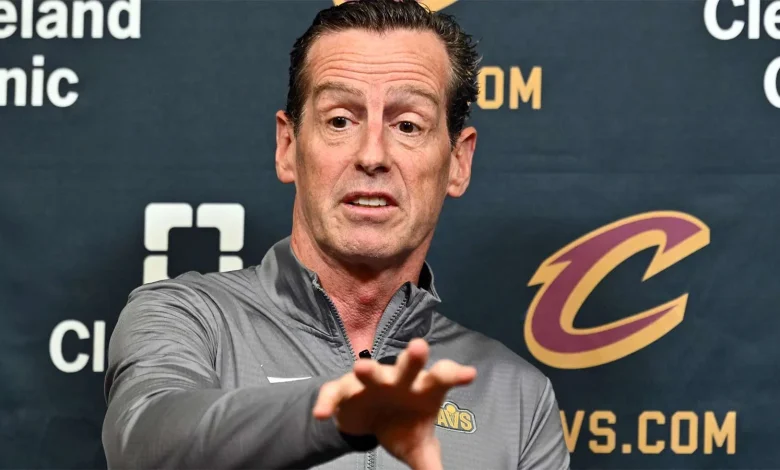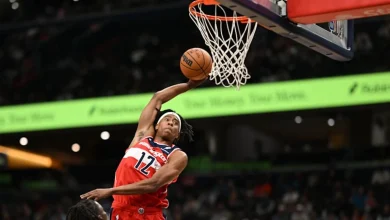Kenny Atkinson’s Cavaliers: Searching for Identity Amid Early Season Turmoil

Quick Read
- Kenny Atkinson’s second year as head coach has brought an identity crisis for the Cavaliers.
- Evan Mobley’s increased offensive role has led to both exciting flashes and growing pains.
- Role players like Jaylon Tyson and Nae’Qwan Tomlin are standing out for effort amid teamwide inconsistency.
- Jarrett Allen’s unpredictable minutes raise questions about coaching decisions.
- Donovan Mitchell’s efficiency is masking deeper problems in the roster and system.
Kenny Atkinson’s Second Year: Expectations Meet Uncertainty
The Cleveland Cavaliers entered the 2025-26 NBA season with hope, but also plenty of skepticism. Injuries to key starters Darius Garland and Max Strus were an immediate setback, shaking up rotations and leaving Coach Kenny Atkinson to make tough choices with a roster that felt more like a work in progress than a finished product. Yet, what’s become clear as the season unfolds is that the Cavaliers’ struggles run deeper than missing bodies—they’re about missing identity.
Mobley’s Role: Promise and Pain in the Spotlight
Evan Mobley’s development has been at the center of Atkinson’s vision for the team. Last season, Mobley’s game grew in new directions—he was handling the ball more, running pick-and-rolls, and expanding his shooting range. The expectation was that, under Atkinson’s guidance, Mobley would take another step forward this year. Early on, that seemed to be the case: Mobley’s usage skyrocketed, averaging nearly 15 field-goal attempts a night, and he was even letting it fly from three-point territory, sometimes attempting as many as eight threes in a game.
But with Garland sidelined, Mobley has been thrust into a starring offensive role for which he may not be fully ready. His highs—midrange faders, pull-up threes, and rim dominance—are eye-catching. Few in the league can match his combination of size and skill. But the lows are just as pronounced. At times, Mobley looks like a player being asked to do too much, too soon. The only way to find out if he can handle this new burden, though, is to let him try—and that has meant some painful growing pains for both player and team.
Role Players Shine Amid Teamwide Apathy
Effort has become a talking point in Cleveland, and not for the reasons fans might hope. While young role players like Jaylon Tyson, Nae’Qwan Tomlin, and Craig Porter Jr. have stood out for their hustle, their standout performances also highlight a troubling lack of collective energy. Outside of Donovan Mitchell, much of the roster has looked disengaged, especially on offense, where the team often settles for quick, low-percentage threes instead of attacking the paint.
On defense, the same trio is often the only group showing consistent commitment. Tyson and Tomlin’s effort sometimes leads to foul trouble, but their willingness to do the dirty work is a double-edged sword. Ideally, they’d play more targeted roles, but the current lack of depth and intensity elsewhere on the roster has pushed them into the spotlight. Their emergence is as much a symptom of the Cavaliers’ malaise as it is a bright spot.
Jarrett Allen: A Mystery in Minutes
Perhaps the most puzzling aspect of Atkinson’s early-season decisions has been his handling of All-Star center Jarrett Allen. In past years, Allen’s minutes only fluctuated in blowouts. This season, there seems to be no clear logic behind his playing time—one night he’s the focal point, the next he’s almost invisible after the first quarter.
The contrast was stark in two recent games: against Miami, Allen dominated when fed the ball and looked like the Cavaliers’ best player. But the next night against Toronto, he was barely involved after a strong start. With the team desperate for stability, Allen’s unpredictable usage raises questions about the coaching staff’s long-term vision. In games where the Cavaliers need a spark, Allen’s proven skill set shouldn’t be overlooked for less experienced options like Dean Wade or Thomas Bryant.
Mitchell’s Brilliance Masking Deeper Issues
Through all the chaos, Donovan Mitchell’s scoring has been the team’s saving grace. His efficiency has single-handedly kept the Cavaliers above .500. But that’s a fragile formula. If Mitchell has an off night—or if he simply plays like a mortal rather than a superstar—the Cavaliers look alarmingly ordinary. Their record, currently a respectable 8-5, hides just how close they are to mediocrity.
This reliance on Mitchell is exactly what the Cavaliers hoped to avoid when building this roster. The plan was for the supporting cast to take more responsibility, freeing Mitchell to be a closer rather than a savior. Instead, Cleveland finds itself repeating old patterns from the J.B. Bickerstaff era: as Mitchell goes, so goes the team. It’s a risky way to chase a title, and one that leaves little margin for error.
Searching for Answers in a Season of Questions
For Kenny Atkinson, the challenge is clear. The Cavaliers need to find an identity that goes beyond simply riding the hot hand. That means clarifying roles for players like Mobley and Allen, demanding more consistent effort across the roster, and building an offense that’s less predictable and more resilient. If they can do that, the talent is there to contend. If not, the early warning signs may be a preview of more disappointment to come.
The Cavaliers’ slow start under Kenny Atkinson is less about bad luck or temporary absences and more about a team struggling to define who they are. Unless Atkinson can instill a clearer identity and balance player roles, Cleveland risks wasting a season of prime Donovan Mitchell and stalling the growth of its young core. The clock is ticking—and the questions are only getting louder.





